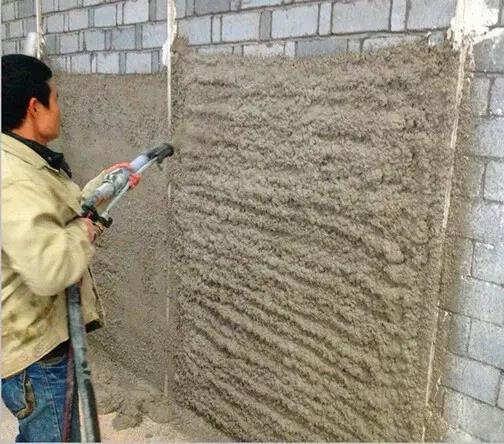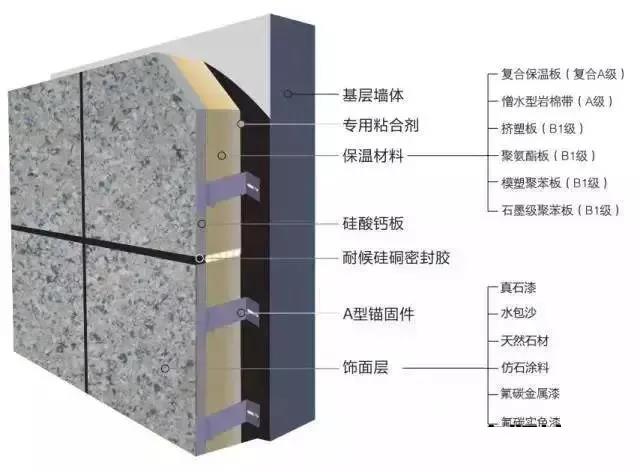Shandong chuangyao biotechnology summarizes the precautions for mortar construction in winter
The function orientation of mortar in construction engineering determines its characteristics of large construction area and thin construction thickness. Therefore, it is difficult to effectively protect the mortar after construction in winter, and the mortar after construction is easy to be frozen, resulting in a series of problems, such as pulverization, falling off, etc.
Sign of entering winter construction period
According to the provisions of code for winter construction of building engineering JGJ / T 104-2011 and code for acceptance of construction quality of masonry engineering gb50203-2015, when the temperature conditions at the construction site meet the following conditions, it shall be regarded as entering the winter construction period:
1. When the outdoor daily average temperature is stable below 5 ° C for 5 consecutive days, winter construction measures shall be taken for masonry works.
2. In addition to the winter construction period, winter construction shall also be adopted when the minimum temperature of the day is lower than 0 ° C.
Antifreeze mortar

1. Frost and frost resistance of mortar
The anti freezing property of mortar refers to that the mortar mixture can resist the influence of negative temperature and harden during winter construction. After curing under positive temperature conditions, the strength continues to increase and meet the anti freezing capacity required by the design. The frost resistance of mortar is limited and conditional. In Jinan and its surrounding areas, the minimum temperature in winter is generally - 5 ~ - 10 ° C, and most plastering and masonry construction is at least - 5 ° C. if it is cold again, the construction will not be carried out basically.
2. Formula design of antifreeze mortar
In terms of relevant standards or regulations, there is no strict standard for antifreeze mortar. The formula design of antifreeze mortar is more based on the actual construction, and the relevant properties of mortar are adjusted, such as adjusting the setting time, so that the cement can start hydration before the temperature of mortar mixture drops to 4 ° C; Improve the strength of mortar used in winter, so that the final strength of mortar hardened body can still meet the architectural design requirements under the influence of negative temperature; Add redispersible emulsion powder to enhance the flexibility and strength of mortar, and add mortar antifreeze to make the mortar harden at negative temperature and meet the design strength requirements of mortar under subsequent positive temperature conditions.
3. Verification of antifreeze performance of antifreeze mortar
As mentioned above, there is no strict standard for mortar antifreeze performance. The only standards we can refer to are cement mortar antifreeze and relevant strength ratio standards specified by the concrete industry. According to the test standard of cement mortar antifreeze, the antifreeze of mortar (minimum temperature is - 5 ° C) shall meet the following standards in strength: R-7 ≥ 10%; R28 ≥ 100%; R-7 + 28 ≥ 90%. In addition, the test block at the same time and under the same conditions on site shall be R600 °. D ≥ 75%.
During winter construction of decoration works, thermal insulation and antifreeze measures shall be taken for the mortar used. For example, when adding additives (thickening and tackifying agent, hydroxypropyl methylcellulose, early strength agent, calcium formate, etc.), the amount shall be determined by laboratory test. During mortar transportation, pay attention to thermal insulation and mix as you use to prevent mortar from freezing.
Protective measures and precautions for mortar construction in winter
1. The construction ambient temperature shall be maintained above 5 ℃, and doors and windows shall be closed for indoor construction.
2. Heat storage method shall be adopted to ensure the temperature of mortar mixture: mortar mixing shall be carried out in the greenhouse, and the ambient temperature in the greenhouse shall be more than 5 ° C. When the mortar is used, the temperature shall be kept above 5 ℃. If the temperature is low, the mortar can be mixed with warm water, but the water temperature shall not be higher than 65 ℃. Hydroxypropyl methylcellulose can be properly added to increase the viscosity of the mortar, improve the workability and ensure that the mortar does not separate.
3. The plastering base course shall be clean and free of oil, impurities and frost. Excessive water spraying is not allowed. There shall be no free water and ice on the base course surface during plastering.
4. Control the service time of mortar mixture: the mixed mortar shall be used up within 2 hours, and the hardened or frozen mortar shall not be used.
Recommended additives for winter construction include redispersible latex powder, early strength agent calcium formate, water reducer, high viscosity hydroxypropyl methylcellulose, etc. For more information, please pay attention to Shandong chuangyao Biotechnology Co., Ltd.
{aspcms:comment}






